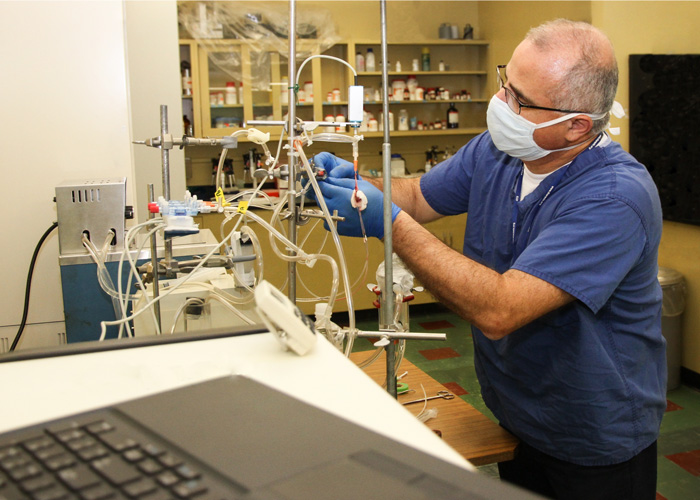Taheri Dissertation Abstract
Unraveling Mechanisms in Hyperoxia-Induced Acute Lung Injury: An Experimental and Computational Study
Dissertation Date: October 7, 2025
Acute lung injury (ALI) and its severe form, acute respiratory distress syndrome (ARDS), are critical conditions characterized by rapid-onset hypoxic respiratory failure, representing a leading cause of intensive care unit admissions. With an annual incidence of approximately 200,000 cases in the United States and a mortality rate of 30–40%, ARDS results in an estimated 75,000 deaths and 3.6 million hospital days each year. Despite being a lifesaving intervention, mechanical ventilation with high oxygen concentrations (hyperoxia) can paradoxically exacerbate lung damage. Hyperoxia-induced lung injury in rats serves as a well-established experimental model for human ALI/ARDS. Notably, rats can be preconditioned to become either tolerant (H-T) or susceptible (H-S) to hyperoxia, providing a unique platform for investigating protective and detrimental mechanisms.
Although oxidative stress, mitochondrial dysfunction, and inflammation are recognized as key contributors to hyperoxia-induced ARDS, the regulatory pathways underlying tolerance or susceptibility remain poorly understood. This dissertation aims to elucidate the role of mitochondrial bioenergetics and oxidative stress in determining these differential responses. The central hypothesis is that lung mitochondrial processes and reactive oxygen species (ROS) production are differentially altered in H-T and H-S rats compared to controls, and that these mitochondrial changes correlate with the severity of oxidative stress.
Three specific aims are proposed to address this hypothesis. Aim 1 will evaluate bioenergetic function and ROS production in mitochondria isolated from H-S, HT, and control rat lungs using spectroscopic assays to measure oxygen consumption, membrane potential, and ROS levels. Aim 2 involves the development and validation of a computational model of lung mitochondrial bioenergetics to integrate experimental data, predict the impact of hyperoxia-induced changes, and quantify how alterations in specific pathways affect overall ATP synthesis and ROS generation. Aim 3 will assess mitochondrial membrane potential and hydrogen peroxide release in isolated perfused lungs using rhodamine 6G and Amplex Red dyes, respectively, to correlate cellular-level changes with organ-level outcomes.
The expected outcomes include a mechanistic understanding of mitochondrial bioenergetics in hyperoxia-induced ARDS, a predictive computational model of lung mitochondrial function, and the identification of potential therapeutic targets. This research contributes to the development of early detection methods and stratified interventions for patients at risk of developing ARDS.
Return to Dissertation Schedule


